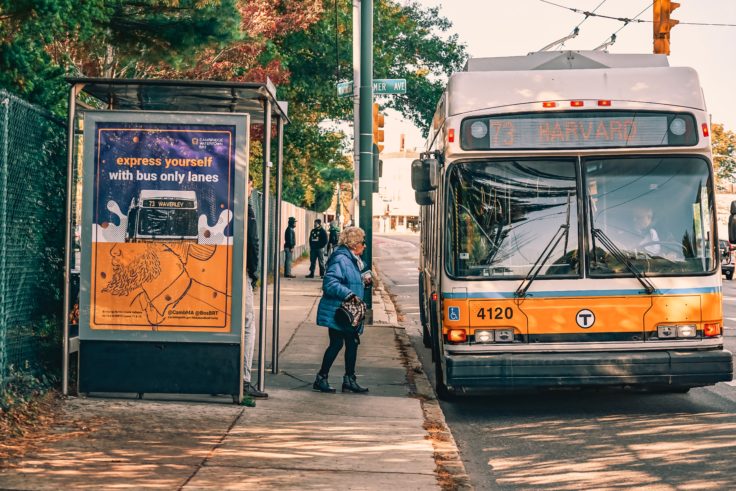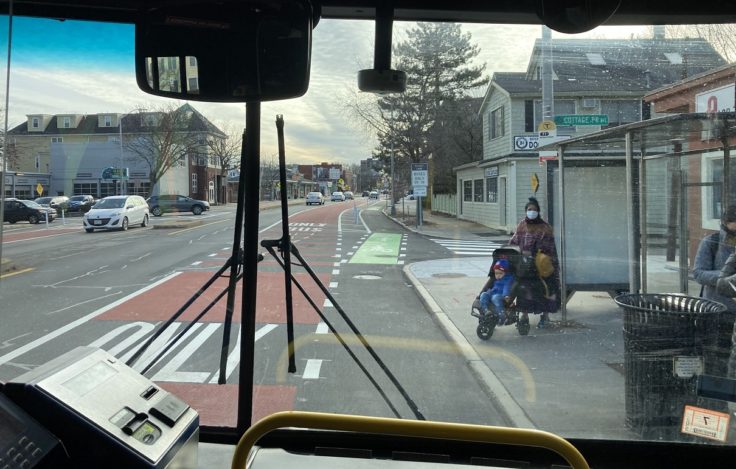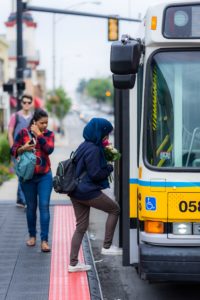January 26, 2023
Keeping Pace: Opportunities for Change within Greater Boston’s Bus System
ITDP and LivableStreets Alliance’s Keeping Pace report shows that Greater Boston’s bus service has not kept up with surging demand and outlines key recommendations to get it back on track by 2030.
In the United States, public transit — especially bus systems — has a long history of disinvestment and neglect that degrades service and perpetuates social and racial inequities. As the country recovers from the COVID-19 pandemic, transport agencies have a powerful opportunity to change how public transit systems operate and serve their riders by investing in both infrastructure improvements and workforce development, all while prioritizing the needs of communities who rely on them the most.
In the region of Greater Boston, MA, where ITDP’s US Program has been working closely with partners to advocate for improvements to bus infrastructure and service, there is an urgent need to reconcile the disparities between existing system capacity and growing demand for transit. Namely, government and public officials need to dedicate funding to dramatically expand the size of the bus fleet, build new maintenance facilities and modernize existing ones, and increase the transit workforce to operate and maintain a bus system that can keep up with the growing and changing population.

ITDP’s new report Keeping Pace: How Greater Boston’s Bus System Can Support a Growing and Changing Region, developed in partnership with LivableStreets Alliance, found that Greater Boston’s population has increased 53% in the last 50 years while the Massachusetts Bay Transportation Authority (MBTA)’s bus fleet has decreased in size. In fact, the MBTA’s current operating fleet of 1,150 buses is smaller than it was in 1972, despite a population growth that has prompted a surge in ridership demand.
With buses serving the highest proportion of low-income riders across the MBTA service area — 42% of bus riders are considered low-income and 48% are people of color — urgent action is especially crucial for ensuring that access to (and service delivered by) the system is equitable. In order to get the bus system on track with the needs of the region by 2030, this report puts forth an actionable plan for elected officials, local governments, and the MBTA to follow — starting by addressing the severe MBTA staffing shortage and chronically underfunded budget, while recognizing that no single entity can achieve progress alone.
The report does not place blame solely on the MBTA for failures in the bus system and notes that not one actor can be faulted, nor can fix the problem themselves — not the MBTA, the local legislature, the City of Boston, nor the many communities served by the system. But, in order to fix it, a sense of urgency and a collaborative effort between policymakers and leaders across all levels of government and within the transit agency are critical for Greater Boston’s bus system to keep pace and be prepared for future growth. A top actionable priority outlined in the report is for the legislature to work with the new Governor’s administration to provide stable and sufficient financial resources for the MBTA, beginning this year.

Recommendations from the report suggest the Administration provide stable and sufficient funding for the MBTA starting in 2023 and allow for regional funding of the MBTA and other transportation projects to protect bus priority and prevent vehicle incursions into bus lanes. For the MBTA, recommended priorities range from the expansion and electrification of bus fleet and facilities, to attracting and retaining operators and key employees, to re-establishing an MBTA internal planning department.
Bus service is also a major part of the MBTA’s budget and it needs to be actively considered in financing conversations for the agency. For municipalities and state agencies, the report outlines strategies to design streets and sidewalks that prioritize transit and people; improve bus stops and stations; ensure housing and transit are planned together; and promote transit and people-oriented communities.
The report is a call-to-action to stakeholders at all levels to work together and prioritize Greater Boston’s bus system to best serve the riders who expect and deserve improvements in the coming years. While systemwide MBTA ridership has yet to recover from the COVID-19 pandemic fully, bus-dependent regions of Greater Boston now have a larger ridership than even before the crisis, underscoring the need for more frequent, reliable, accessible service.
For other US cities, this report and its recommendations offer a roadmap for planning public transit and bus systems that reflect the needs, demands, and interests of a growing and changing population in a pandemic-era world. A modern, efficient, and robust bus system ultimately encourages more usage of — and confidence in — public transit, an essential precursor to reducing vehicle dependency, curbing the escalation of climate change, and improving quality-of-life in cities nationwide.
Download the full “Keeping Pace“ report here >>


